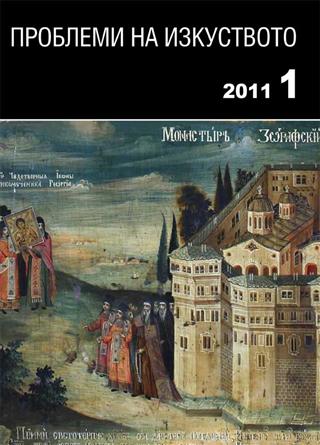За три престолни икони од времето на ателието на Христо Димитров
Three Royal Icons from the Period of the Workshop of Hristo Dimitrov
Author(s): Darko NikolovskiSubject(s): Fine Arts / Performing Arts
Published by: Институт за изследване на изкуствата, Българска академия на науките
Summary/Abstract: Recently, in frames of a private art collection in Macedonia we were acquainted with several icons which had a characteristic Athonite impression embodied with innovations of the Slavic- Levantine Baroque that was headed by the important representative of Samokov, the zograph Hristo Dimitrov. The three Royal icons (cat. no. 1. Jesus Christ Pantoctrator, no. 2. The Holy Virgin with Christ and no. 3. St. John the Forerunner) are dated by the hand of Dimitar in 1792. For these icons we have no information of their origin and according to some stylistic information we can make some suppositions. At this level we cannot be sure of identifying other works by Zograph Dimitar, but simply of naming a list of about ten zographs who are also known by the name of Dimitar and worked in Greece in the 18th c. and are mentioned by M. Chatzidakis who gives the in-depth review of the names of the painters from the period of 1450- 1830. The three Royal Icons from the Zograph Dimitar are associate to the classic manner of the Balkan region from the 18th c. Therefore, the Zograph Dimitar is a representative of the so- called „Athonite” style that was active at the end of the 18th and the 19th cc. Followers of this style are Makarios and the monk Zacharios from Galatista on Halkidiki who worked vigorously in the monasteries on Mount Athos, as well as in the Rila monastery were we find inscriptions and dates of the Royal icons. In Bulgaria there are other authors in this Athonite manner who also were from Greece (Thessaly) and were educated on Mount Athos, like Mithrophanis Nikiphoru in the church of St. Archangel Michail at Etropole (1809) and Nikophoros in the church of St. Nicholas at Elena (1805). From this aspect the observation allows us to presume that the Zograph Dimitar is also one originating from North Greece and his work is close to the Athonite style of the 18th c. Perceiving the time when Dimitar worked and his style, we believe his achievements are near to the workshop of Hristo Dimitrov, the founder of the Samokovian School, who personally gave credits of affirmation of this style noticeable in the wider region.
Journal: Проблеми на изкуството
- Issue Year: 2011
- Issue No: 1
- Page Range: 57-59
- Page Count: 3
- Language: Macedonian
- Content File-PDF

